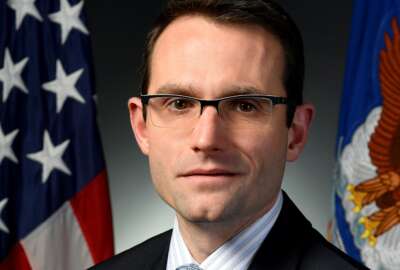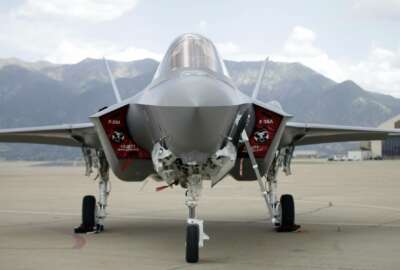
Corporate consolidation, new threat landscape has Air Force changing how it makes planes
With the merger of L3 Technologies and Harris Corporation earlier this summer, the number of defense contractors the military can choose from is getting thin.
With the merger of L3 Technologies and Harris Corporation earlier this summer, the number of defense contractors the military can choose from is getting thin. That has the Air Force concerned, and its considering changing the way it designs and buys planes because of it.
“We’ve gone from having over two dozen vendors who can build a tactical aircraft to two or three,” Will Roper, Air Force assistant secretary for acquisition, technology and logistics, said Monday. “We’re at the critical point where if we don’t start thinking about the industry base strategically we could collapse to two and then to one.”
Roper, who spoke during an Air Force Association event in National Harbor, Maryland, said the Air Force is partly to blame for the consolidation.
Related Stories
Roper stressed the need to take more risk and to develop more agile procurement methods. That will translate into a new Century Series Digital, where the Air Force plans to develop a new fighter jet as frequently as every five years.
The Air Force will announce its Next Generation Air Dominance office on Oct.1, according to Defense News. That office will rapidly develop small batches of fighters from multiple companies.
“What I’m hoping to do is to start making profit in design come back to the Air Force,” Roper said.
The Century Series Digital harkens back to the 1950s, when the Air Force bought multiple fighters from different manufacturers in five years. Back in the 50s, 60s and 70s the Air Force used more experimental and concurrent designs. That’s a completely different way of thinking compared to how the Air Force bought its more recent fighters.
Those were created as huge programs that took sometimes decades to form, in hopes of coming out with a perfect product — read F-35.
Roper’s vision is one of agile acquisition because the U.S. does not have the time to build big program jets in a time of near-peer competition. He used the comparison of Android and iPhone as an example: Both companies are able to make phones with similar technologies, and are constantly one-upping the other.
“I’m going to guess that you would agree that fielding the best phone too late is a losing strategy,” he said. “If you can field a better phone sooner you will win. You own time to market. That is not how we talk in government acquisition and government tech. We have a model that supposes we understand the future. There are too many technologies to understand the future.”
Roper is trying to get the community to take more risk, and is willing to pay to do it. That means more competition and more business for defense companies, even nontraditional ones willing to try something new.
The Air Force isn’t just expecting companies to build hardware and throw it out there. The service wants to change the way it designs aircraft with digital engineering, open architecture and agile software — what Roper calls the “holy trinity.” Those are things that can make constant changes and conduct hundreds of experiments without producing a single piece of metal.
Roper said those things may not be the “point of the spear,” but rather make a “better spear-making process.”
The tools allow the Air Force to design, produce and even sustain an aircraft digitally. The service can test new hardware in hundreds of iterations before it’s even built, so the first one out of the production line is far more advanced than the ones of the past.
“Imagine if all our acquisition professions — who work with this thing we call ‘learning curve’ where the first iteration is not as good as the second, which is not as good as the third until it’s stable — could kill that learning curve and do it immediately,” Roper said. “If you can do that then while you are going into production then you could keep looking at modernization. It’s not expensive, it’s just digital. If you can get your curve beat down on your modernization then you should be able to upgrade a system fairly seamlessly.”
Roper said the Air Force is looking to a similar process for satellites.
Copyright © 2025 Federal News Network. All rights reserved. This website is not intended for users located within the European Economic Area.
Scott Maucione is a defense reporter for Federal News Network and reports on human capital, workforce and the Defense Department at-large.
Follow @smaucioneWFED





